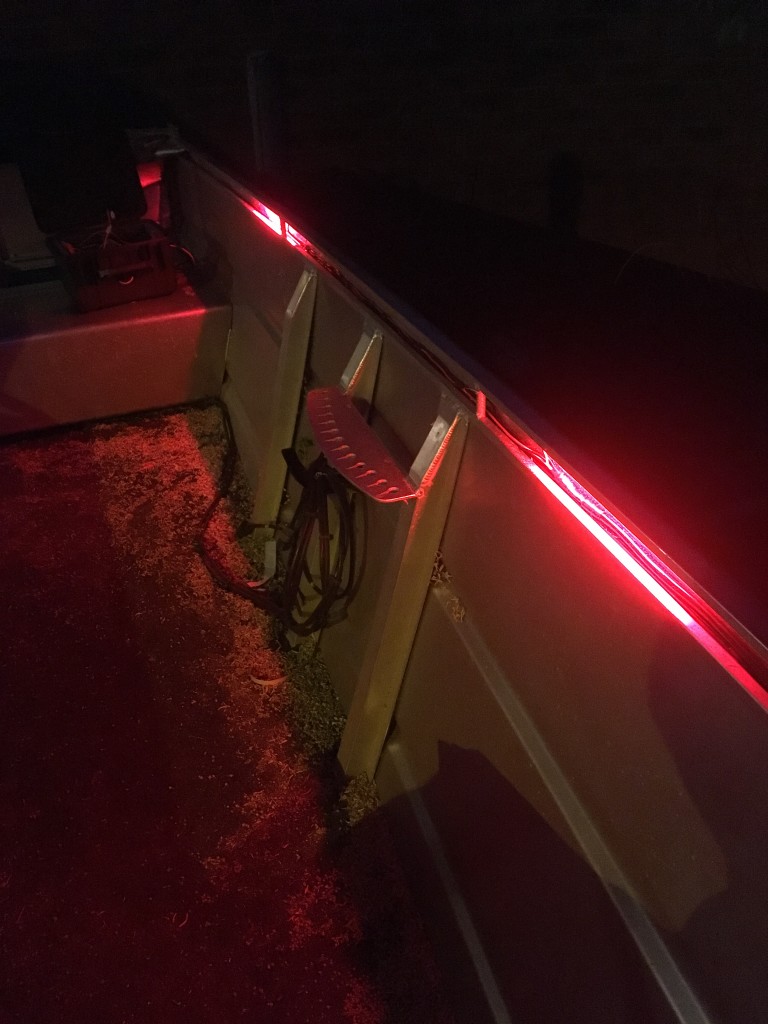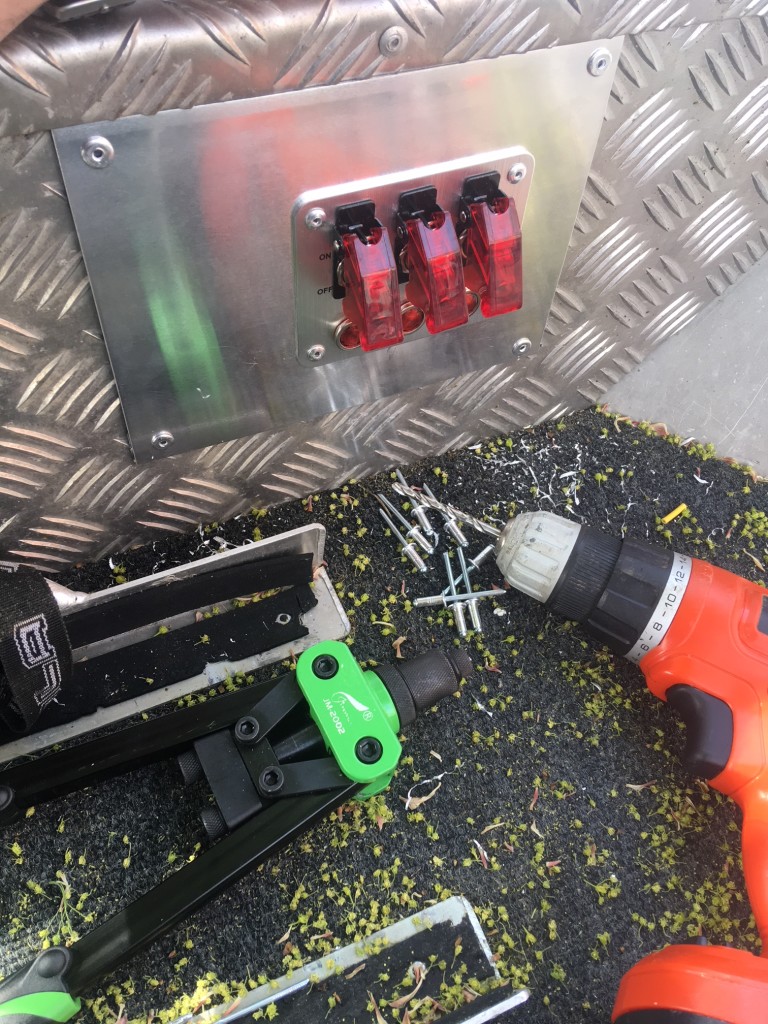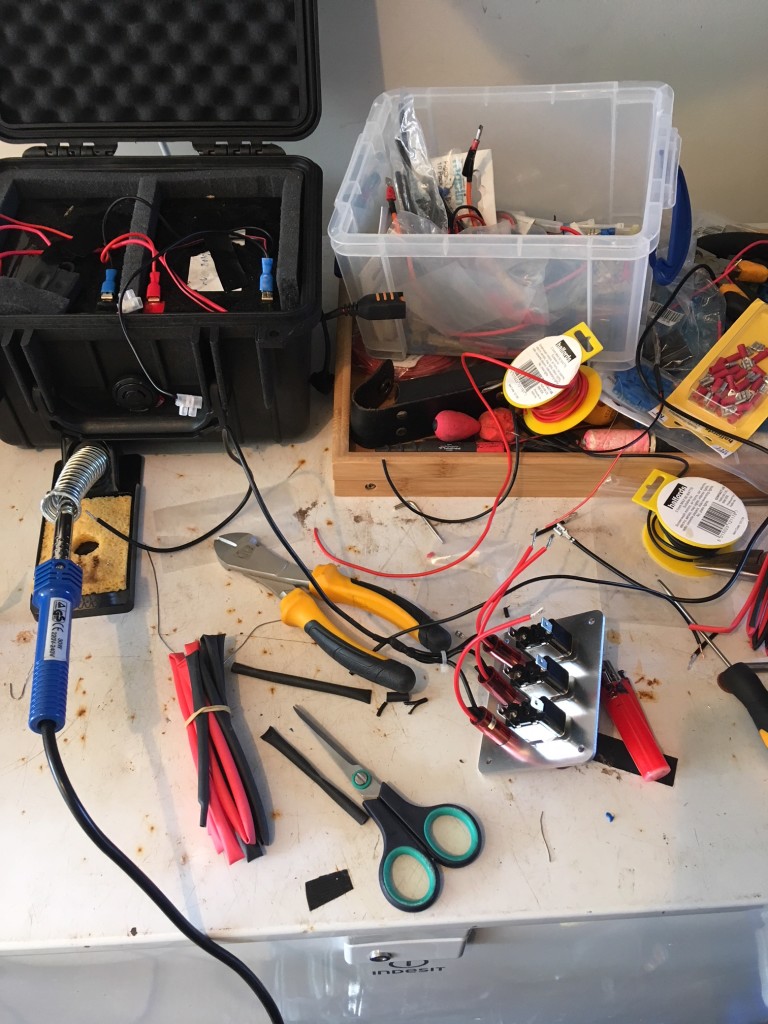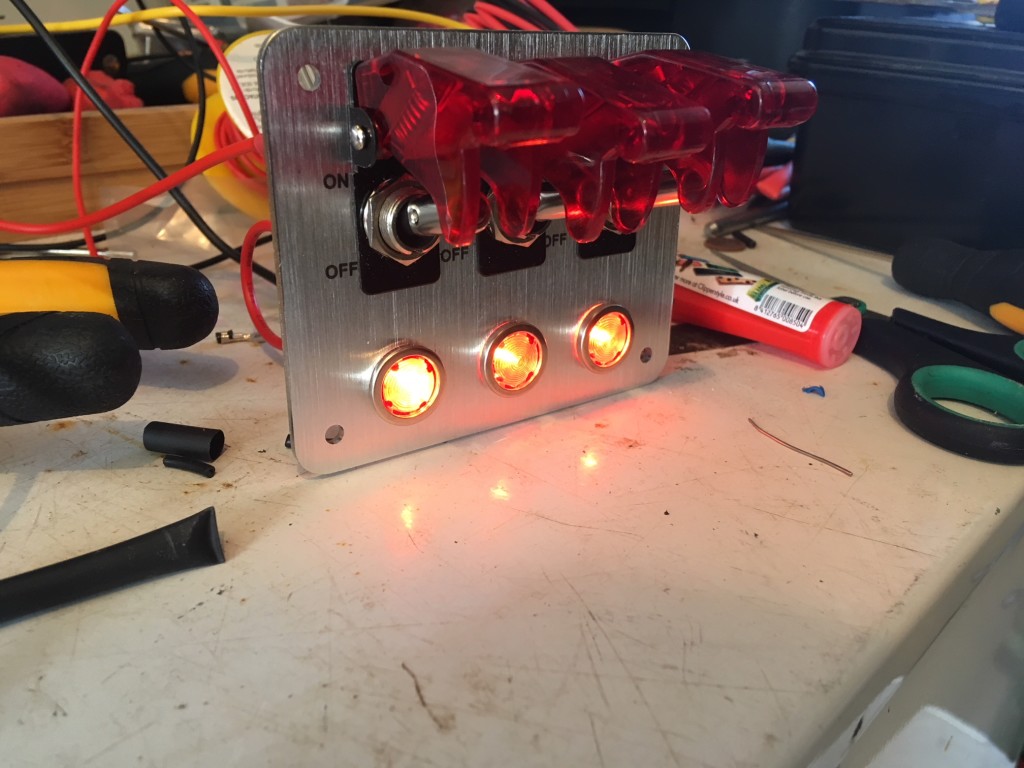Boat lighting
Most boats are set up with white cabin lights, as this is the colour of light that “most” feel comfortable with, and it suits in most instances. However, for fishing it’s not really that good. Firstly, in the summer months, a white light will attract all kind of bugs and creepy crawlies at night. Secondly, a white light ruins your natural night vision, which usually takes 30 mins or more to acclimatise with once it gets dark. It is far better to use a red light which doesn’t disrupt it as much, and also doesn’t attract all the insects.
When choosing the lighting option it can be easy to “over light” which means putting too much light in the boat, so that it will ruin your night vision anyway. It is surprising how little light you actually need when out at night, as once your eyes get used to the dark you become hyper-sensitive to light, so a very low level glow is really all you need.
This is why I installed two low-power LED strips, which for a 16ft boat doesn’t sound very much, but in effect is more than adequate. LED strips are very power-efficient and last forever, also they are small enough to fit under the gunwales, and provide a downward light so they don’t sit in the immediate eye line.
LED strips are also what I use for my navigation lights, two strips on either side is fine for this purpose. You also need an all-round white light at the stern of the boat, this is mounted on a pole and fixed on dark so it’s out the way.
All the wiring for the lights goes into a waterproof junction box which is situated at the front of the boat, and the outputs then go into a switch panel, which was then fixed to another aluminium plate. The ally plate is large enough to cover the access hole I cut previously, which seals everything up nicely.
To make sure it sealed tightly over the tread plate, rather than grinding down the tread plate grips, I put a layer of foam around the edges before riveting it to place.
There are various waterproof switches you can get for marine uses, the most important thing to do when wiring them is to make sure all the connections are also waterproofed, which means lots of shrink-tubing on the connections, and fixing it in an area where there is going to be little water ingress – which is why I mounted it at the bow of the boat, which, apart from the gaping hole I previously cut, is more or less sealed.
It is also good to have the switches at the front of the boat, for me, as when I am fishing I am usually at the front or middle of the boat so can easily reach them to turn them on and off when needed, additionally the switch panel covers the access hole I cut previously. One of the things I wanted was a lighted switch so I can tell at a glance what is on and what isn’t.
The battery is in a waterproof box at the stern of the boat, which means the cabling needed to run from the stern to the bow of the boat, not an issue with a Seastrike, as you can run it along the recesses of the gunwales. To make sure it doesn’t slip around, however, I held it in place with some strong double-sided tape.











